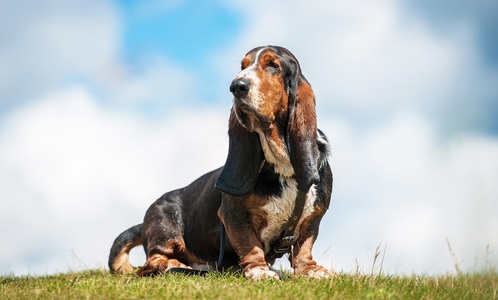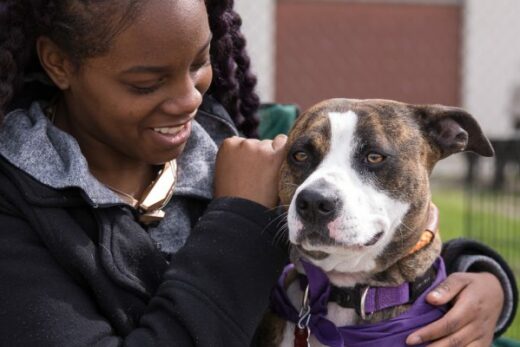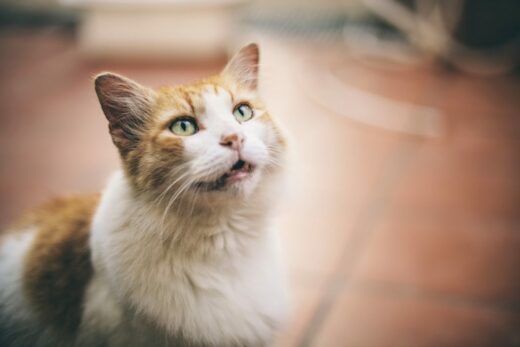For as long as history has had hunters, there have been hounds: loyal, hardworking canines that chased down prey and served their human masters. The shape, size, and specialty of a hound varies greatly depending on his birthplace and the work he’s bred to do, but universally the hound is a trustworthy companion that owners both cherish and admire.
The American Kennel Club, or AKC, recognizes no less than 32 of these breeds as being part of their “hound group.” While some may be familiar to hound fans, others may come as more of a surprise, given their diminutive stature or exotic looks. The one uniting factor of the breeds in the hound group is their origins: each were bred to hunt, flush, or track a particular type of quarry to aid their masters. Below are some of the most common types of hound dogs around today.
The American Hunting Hounds
 Woven into the fabric of US history, American hounds have long appeared beside their masters in paintings, photographs, and even in literature through classic stories. Extremely popular throughout the southern and mid-western areas of the country, these different types of hound dogs can now be found nationwide as companion animals as well as working dogs.
Woven into the fabric of US history, American hounds have long appeared beside their masters in paintings, photographs, and even in literature through classic stories. Extremely popular throughout the southern and mid-western areas of the country, these different types of hound dogs can now be found nationwide as companion animals as well as working dogs.
- Redbone Coonhound: The breed highlighted in the classic coming-of-age novel Where the Red Fern Grows, the Redbone is named for his hunting nemesis: the raccoon. His long ears hang all the way to his muzzle, and his strong legs and large paws make short work of even the most difficult terrain. Unlike some breeds, the Redbone Coonhound has only one recognized coat color: the deep rust red-brown that gives him his name.
- Treeing Walker Coonhound: While the classic tri-color pattern of his coat may be reminiscent of his hound “cousin,” the Beagle, the Treeing Walker Coonhound has a lot more height. As his name suggests, he’s a fast runner that’s particularly adept at cornering raccoons up trees for his hunting master to dispatch. His characteristic floppy, muzzle-length ears feature a slight rounding to the bottom edges.
- Bluetick Coonhound: One of the American-bred, raccoon-loving hounds, the Bluetick is enamored of hunting and it shows. They live to run and chase, and are best suited to a home and yard with plenty of room for them to stretch their long legs. Without proper exercise and attention, his owner might hear more than he’d prefer of the breed’s classic baying.
- Black and Tan Coonhound: The last of the coonhounds, the Black and Tan Coonhound shares distinct facial and body symmetry similarities with the Bloodhound, thanks to a “long” face and ears that hang below the muzzle. He has a very strong prey drive, and without proper training and enclosure, an owner might find him a bit headstrong if an unlucky squirrel crosses his path. His predominantly black coat is offset by warm brown tones in his “socks”, muzzle, and distinctive “pumpkin seed” dots at the corners of his eyes.
The English Hunting Hounds
 There are few more iconic companion animals than hunting hounds to the English. From the classic fox hunt to chasing down stags, the joyful bark of a canine hunting party is unmistakable. The long history of hunting in this region has given rise to some of the most popular hounds in the world through careful selective breeding, training, and standards.
There are few more iconic companion animals than hunting hounds to the English. From the classic fox hunt to chasing down stags, the joyful bark of a canine hunting party is unmistakable. The long history of hunting in this region has given rise to some of the most popular hounds in the world through careful selective breeding, training, and standards.
- Bloodhound: There’s a good reason the droopy-faced Bloodhound is often used as a mascot to represent sleuthing and solving mysteries: his incredibly powerful sense of smell can track almost anyone or anything across substantial distances. His long, floppy ears brush the ground and create a scent funnel that intensifies his talent for sniffing out scent traces, enabling him to track down everything from illicit substances to missing people.





